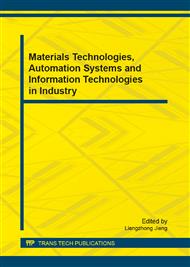p.808
p.812
p.819
p.823
p.828
p.834
p.843
p.849
p.854
Optimal Formation Reconfiguration Control of Multiple UCAVs Using Improved Firefly Algorithm
Abstract:
Optimal formation reconfiguration control of multiple is a complicated global optimum problem. In this paper, according to the characteristics of Uninhabited Combat Air Vehicles. A Novel Firefly Algorithm was used to solve Uninhabited Combat Air Vehicles, the redesign of the individual location update in the algorithm, and introduced a Levy flight to increase the population search domain. In addition, a local search algorithm is introduced to enhance the local search ability in this paper. the algorithm was experimented and the experimental results show that the new algorithm to be successful in locating multiple solutions and better accuracy. Series experimental results demonstrate the feasibility and effectiveness of the proposed method in solving the optimal formation reconfiguration control problem for multiple UCAV.
Info:
Periodical:
Pages:
828-833
Citation:
Online since:
August 2013
Authors:
Price:
Сopyright:
© 2013 Trans Tech Publications Ltd. All Rights Reserved
Share:
Citation:


